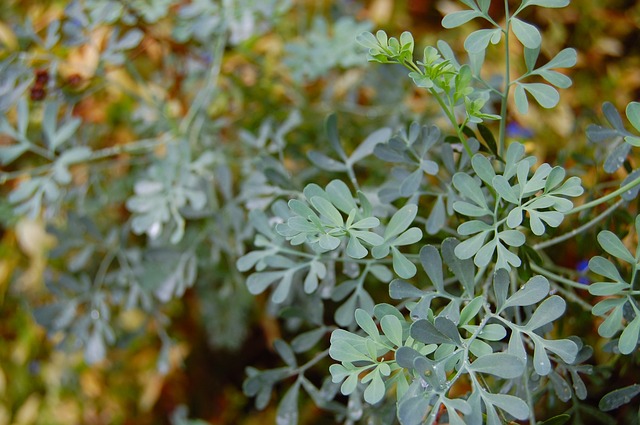
 |  |  |  |  |
 |  |
Fragrant rue is a perennial plant with a distinct aroma. The stem is erect, 10-30 cm high. Inflorescence glabrous. The leaves are simple, arranged alternately, without leaflets, pliform-triangular, doubly or triply divided with elongated-inverted ovoid, dull lobes. Flowers bisexual, regular, yellow, arranged at the top of the plant, in liquid shield-shaped inflorescences. Petals four. Fruit - a round, four-socket box. Fragrant rue flowers in June-July. The fruits ripen in September.
The flowers of the fragrant rue are proto-androus and are pollinated by insects (most often tiny flower flies). During flowering, the rue is able to move parts of the flower, which increases its pollination capabilities. At the beginning of flowering, it does not allow the plant to self-pollinate, but towards the end of flowering, on the contrary, it is also able to self-pollinate.
Fresh or dried plant is used for medicinal purposes. The fragrant rue is harvested during its flowering period. Collect the above-ground part of the plant with leaves, and as a rule do it with rubber gloves, because the juice of the plant can cause serious skin burns and swelling. The plant can be dried spread on sieves or tied in bundles, in a well-ventilated and shaded place. The finished drug is green in color and is stored in tightly sealed glass or metal containers, protected from sunlight, as the plant fades in the sun and loses its value. The drug can be stored for two years.
Fragrant rue leaves contain alkaloids - 0.2%, essential oils - 1.2%, flavocolrutin, furonumarin, furocoumarins, xanthoxin, rutin, coumarin - 0.1%, umbelliferone, berhapten, flavonoids - rutin, quercitin >2%, as well as organic acids (apple and valerian), vitamin C, bitter substances and resins.
Medicinal significance
Rue preparations have antipyretic, diuretic, hemorrhaging and estrogenic effects, and the plant is also great for accelerating uterine contractions and stimulating appetite.
The substances contained in the fragrant rose (coumarins, flavonoids - rutin and quercitin) have a vasoconstricting and antispasmodic effect. In addition, coumarin-umbelliferone together with berhapten increases the sensitivity of the skin to ultraviolet radiation.
In folk medicine, fragrant rue is used as a single tea or in mixtures, as a poultice, both internally and externally. Plant extracts are used as a disinfectant for rinsing the eyes in case of conjunctivitis. In case of inflammation of the eyelids and skin, compresses of decoctions of the plant are used, in addition, they are also used to treat frostbite, acne, skin fungus and hernias.
Fragrant rue is also used in cases of neurosis, as a tonic, antiseptic, antipyretic, and is also used against helminths. Herbal preparations help relieve rheumatic and neuralgic pain, and are also effective in relieving migraine pain.
Fragrant rue is useful in cases of frequent urination, impotence, fragile blood vessels (easily bursting), rickets and myopia. Rue root is used for the treatment of enlarged varicose veins and other diseases.
The fragrant rue is often found in tea mixtures intended to treat liver and heart diseases, as well as coughs and colds.